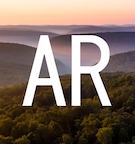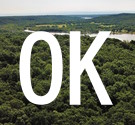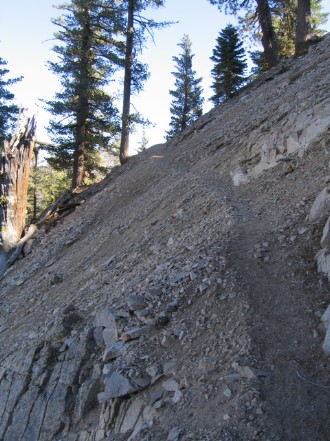
Coyote trail along scree slope.
Most people would describe this as a "coyote trail" but trails like this are groomed by the traffic of various animals such as deer, rabbits, skunks, etc.
"Coyote trails" like this are the primary pathways of bigfoots.
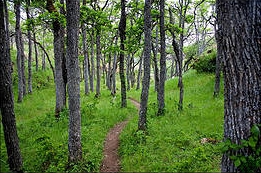
Coyote/deer trail in a Spring forest
Try running like a silent ninja along a coyote trail at night. If you get good at it, you'll find that you are running in a tightrope pattern. It's a natural adaptation for moving quickly and quietly in a world of narrow trails.
If you step off the trail at all you will make more noise (brush crunching sounds) than if your feet fall only on the center of the trail.
Find some woods and give it a try. It's the best way to help you understand why bigfoots walk with such an un-staggered pattern.
|
|
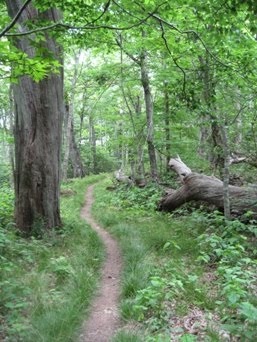
Coyote trail on level ground.
A coyote trail is quite narrow, compared to a city sidewalk.
Humans are accustomed to walking on paths that are wider than their hips. Whereas bigfoots often (usually) walk along trails that are much more narrow than their own hips. A bigfoot's step pattern must be adapted a world of narrow trails, and it is!
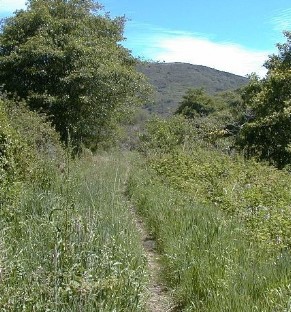
Coyote/deer/rabbit trail through grass.
Even when they are not walking across steep precarious slopes, they still want their big feet to land in the middle of the trail, so they don't lose balance and fall.
If you attempt to walk along a coyote trail in the same manner that you would walk along a sidewalk or across a mowed lawn -- in a relax staggered step pattern -- you will eventually snag your foot on some low brush and you will fall down. Try it sometime.
|




